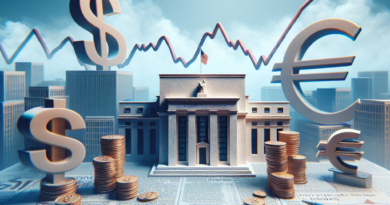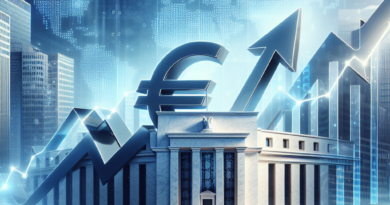A new financial crisis threatens the entire world
Another – yet another – financial crisis, accompanied by the collapse of insurance companies and banks, with a consequent sell-off on the stock market.
This is the worst scenario that is feared if Europe continues to want to imitate the US economic model.
One of the most recurring themes in conservative economic narrative is blind admiration for the United States and its enviable growth.
After all, they appear, as has been fashionable to say for some time now, so "resilient".
They overcame the post-Covid crisis without too many obstacles, as well as the consequences of the Russian invasion of Ukraine.
Conservative neo-liberals praise the innovation, technology and entrepreneurial approach of the USA.
What they seem to ignore, however, is that the way the US economy is growing – record market capitalizations and incredible balance sheets – is frighteningly reminiscent of the years before the 2008 financial crisis.
And capitalizations and balance sheets could soon reverse course, just as happened in 2008.
While Europe is busy managing the consequences of deindustrialization and the aging of the workforce, which has caused spending on welfare and state subsidies to soar, the United States is hiding the dust under its carpets.
An example? The insurance crisis, now looming, as Bloomberg analysts explain.
A threat to the stability of the entire system.
Millions of homeowners have switched from private insurance to state-run “last resort” insurers in areas affected by the climate crisis and hurricanes, wildfires and floods triggered by rising temperatures.
They have doubled their market share since 2018 and their liabilities topped the $1 trillion mark for the first time in 2022, according to the Property Insurance Plans Service Office, a research firm that tracks the industry.
read also The US real estate crisis hits Germany and alarms the banks Private insurers did not hesitate to offload their liabilities.
And now even just a small wave of claims could overwhelm the system.
If and when this happens, the United States government will have to take on the full responsibility.
Not a problem for a country like the United States.
But what if this were to occur at the same time as a new banking crisis? Recently, the International Monetary Fund (IMF) warned that US banks are at risk due to the impact of high interest rates on the value of commercial properties.
Office buildings – the protagonists of a dizzying appreciation in the last 15 years – are now a burden on the back.
Analysts have been worried for some time about the enormous liabilities on bank balance sheets: the lack of demand for office space, due to smart working, means that a crisis is now upon us.
A situation in many ways similar to that of the subprime residential real estate markets, which triggered the 2008 financial crisis, when a series of interest rate increases made mortgages unaffordable, pushing owners to offload their properties.
According to the IMF, a "considerable subgroup" of banks are in difficulty, "with fears that the failure of one institution could cause a further loss of confidence in the sector".
He adds: “Beyond unrealized losses due to rising interest rates, the credit risk faced by some institutions, particularly their exposure to corporate real estate, is now at the center of investor concerns.” Ratings agency S&P's also expressed strong concern about high interest rates, adding that rising debt could trigger a wave of corporate bankruptcies in the United States next year.
Some analysts at the agency said thousands of companies hedged their interest rate exposure, betting they could refinance when rates fell.
What would happen if rates fell, yes, but only slightly? read also Banks in Europe have a 1,400 billion euro problem Not to mention the extreme exuberance on US stock markets.
Some observers are convinced that the increases in share prices over the last two years, which have pushed the S&P 500 index to its highs, are the result of a speculative bubble and that the burst is imminent.




